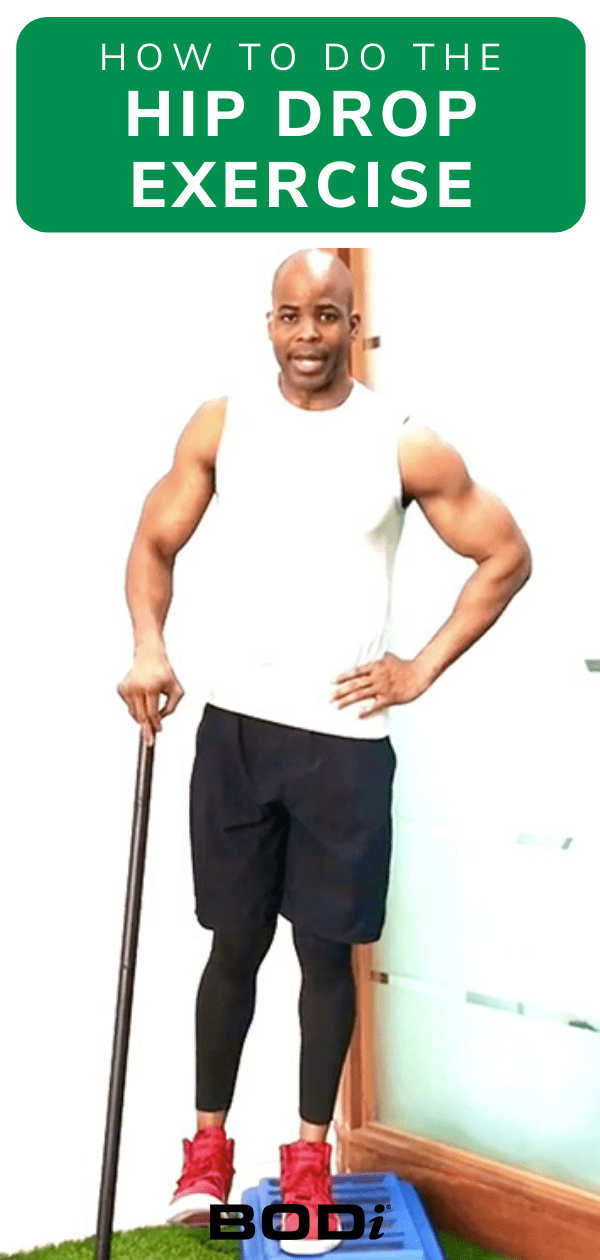Protect Your Hips and Lower Back With the Hip Drop Exercise

Heavy lifts with big movements like squats, deadlifts, rows, and presses are necessary for building a strong and athletic body. But talk with certified trainers who have been around the block a few times, and you’ll find advocates of the smaller stuff, too, like the hip drop exercise.
Now, it might not look like much (and you probably won’t drum up any followers of a #hipdropchallenge) but this move targets pelvic instability, which can be a godsend for people with pain or tightness in the back, knee, or hips.
Here’s how to do this humble little move correctly, and why you might want to start adding it into your routine.
Hip Drop Exercise: Step-by-Step Instructions
- Stand on a low box or step with only your left foot, so that its inside edge is near the edge of the step, and your right foot is hanging off of it. Hold onto a railing or wall for balance if needed.
- Without bending either knee or bending or twisting your torso, lower your right hip as if reaching toward the floor with your right heel. (The top of your left hip will feel like it’s moving towards the bottom of your left ribs.)
- Reverse the move, lifting your right hip back up.
- Do equal reps on both legs.
What Is Pelvic Drop?
Pelvic drop, or pelvic instability, is when your hips sway side to side when you walk.
There are many possible causes for this — some serious, some less so — but the end result is almost always pain and dysfunction. “Pelvic stability and control are crucial to simple movements we use every day such as walking,” says fitness expert Cody Braun, CSCS.
By performing an exercise like the hip drop, you can work to correct this instability.
Muscles Worked by the Hip Drop
“The hip drop trains the gluteus medius and quadratus lumborum to stabilize and align your pelvis,” Braun says. That translates into better movement during activities like running, squatting, lunging, and more.
“Your gluteus medius is a small muscle on the outside of your hip, and is key for proper pelvic stabilization,” Braun explains. It’s your primary hip abductor, pulling your thighs outward away from your midline.
When it’s weak or “inhibited,” your left hip will drop when you step onto your right foot, and vice versa, producing that telltale pelvic sway.
Another key pelvic stabilizer is the the quadratus lumborum (QL), a triangular pair of muscles that runs from either side of your lower back near your rib cage to the back of the pelvis.
When it’s working properly, the left QL — along with the external obliques on the left side of your waist — fires up when you step with your right foot, and vice versa. If they aren’t doing their jobs, you get that pelvic drop again.
The hip drop exercise work all of these muscle groups and retrains them to fire properly while you’re going about your daily tasks.

